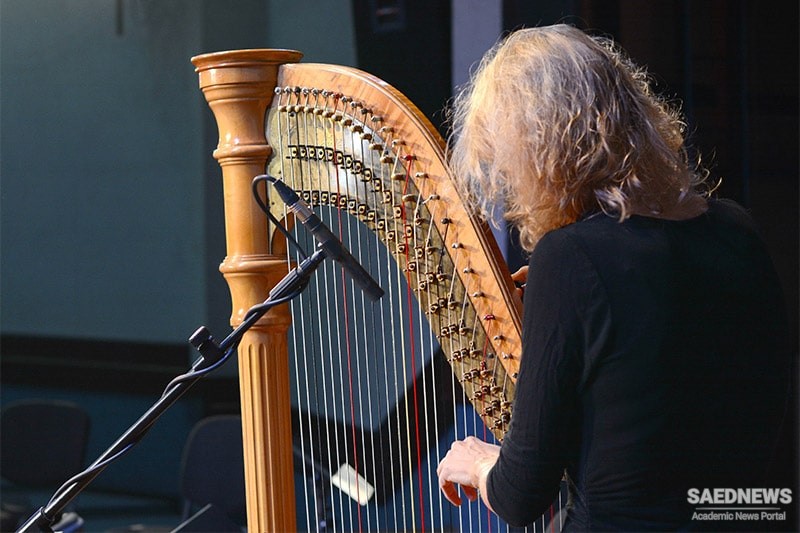The angular harp in Egypt came from Asia; it first appears on art works representing Asiatic musicians. Three nearly identical specimens from a more recent epoch have been preserved. One is displayed in the Egyptian department of the Metropolitan Museum of Art in New York; a second one can be seen in the Louvre, though displayed upside down; a third one was bought in Cairo by the author of this book for the Museum of Musical Instruments in Berlin. A famous relief in the museum in Alexandria, made in Heliopolis about 500 B.C., shows a similar harp in use and affords the only possibility of dating the three preserved specimens.
All of them have an upright, narrow body in one piece, with the front open. It is slightly deeper at the upper than at the lower end. This body is entirely sewn into a piece of leather, and the part of the leather which covers the open front serves as a soundboard. Just under the soundboard, forming its axis, there is a thin bar of wood held in position by crosspieces and used as a stringholder. The outer ends of the strings are fastened to a round stick, projecting at an acute angle from the lower end of the body.
This stick, piercing the body, rests on the lap of the seated player while the body is held up against his chest, the strings facing outwards. Sometimes the player stands, supporting the stick between her legs. The strings, numbering twenty-one, twenty-two or twenty-three, are tied to cords, which in turn are tied around the stick and kept in position by unturnable knobs of alternately clear and dark color. The strings end in ornamental tassels hanging down from the stick.


 THE JAWS’ HARP
THE JAWS’ HARP














































